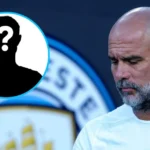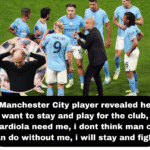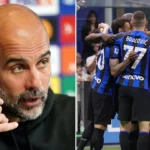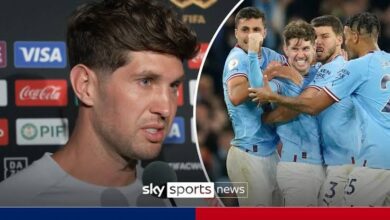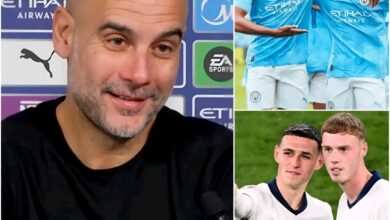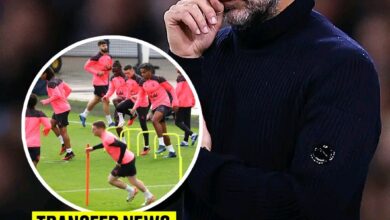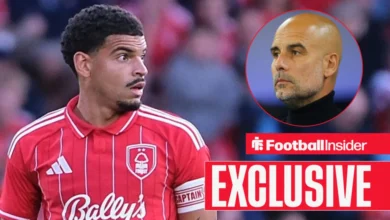Barcelona player dreaming of playing for Barcelona may come through

Bernardo Silva’s aspiration to don the iconic Blaugrana jersey has been a recurring theme in recent football transfer windows. The Portuguese midfielder, known for his technical prowess and vision on the field, has long admired FC Barcelona’s philosophy and style of play. Despite mutual interest, various factors have consistently impeded the realization of this dream move.
In the summer of 2025, the narrative seemed poised for a different outcome. Silva’s contract with Manchester City included a release clause reportedly set at €50 million, a figure that appeared attainable for a club of Barcelona’s stature. Moreover, Silva demonstrated his commitment to the potential transfer by expressing willingness to accept a reduced salary to facilitate the move.
However, the appointment of Hansi Flick as Barcelona’s head coach introduced a new dynamic to the club’s transfer strategy. Flick, renowned for his emphasis on youth development and high-intensity football, envisioned a squad built around emerging talents and rapid transitions. This approach, while aligning with modern football trends, inadvertently sidelined seasoned players like Silva, whose style is characterized by control and measured creativity.
Under Flick’s guidance, Barcelona began targeting younger profiles such as Jamal Musiala and Xavi Simons, players who embody the explosive potential and adaptability desired in the new system. Silva, at 30, found himself at odds with this vision, despite his undeniable skill set and experience at the highest levels of competition.
The club’s financial considerations further complicated the potential transfer. While the €50 million release clause was within reach, Barcelona’s ongoing economic challenges necessitated prudent spending and a focus on long-term investments. This fiscal prudence, coupled with Flick’s strategic direction, resulted in a lack of concrete pursuit of Silva’s services.
Despite these setbacks, Silva’s commitment to joining Barcelona remained unwavering. He reportedly declined lucrative offers from other clubs, including those in the Saudi Pro League, underscoring his desire to be part of Barcelona’s project. However, the club’s response remained non-committal, leaving Silva in a state of limbo as the transfer window progressed.
As the summer unfolded, alternative options began to surface for Silva. Paris Saint-Germain expressed interest, reportedly willing to activate his release clause, while his boyhood club, Benfica, also explored the possibility of a reunion. These developments highlighted Silva’s continued relevance in the transfer market and the high regard in which he is held across Europe.
For Barcelona, the decision to forgo pursuing Silva reflects a broader shift in recruitment philosophy. The club, under Flick’s leadership, is prioritizing the acquisition of younger talents who can be molded into the team’s tactical framework. This approach aims to build a sustainable and dynamic squad capable of competing at the highest levels for years to come.
In conclusion, while Bernardo Silva’s dream of playing for Barcelona remains unfulfilled, the circumstances surrounding the potential transfer underscore the complexities of modern football dynamics. Balancing player aspirations, managerial strategies, and financial constraints is a delicate endeavor, and in this instance, it resulted in a missed opportunity for both the player and the club.
Bernardo Silva’s aspiration to don the iconic Blaugrana jersey has been a recurring theme in recent football transfer windows. The Portuguese midfielder, known for his technical prowess and vision on the field, has long admired FC Barcelona’s philosophy and style of play. Despite mutual interest, various factors have consistently impeded the realization of this dream move.
In the summer of 2025, the narrative seemed poised for a different outcome. Silva’s contract with Manchester City included a release clause reportedly set at €50 million, a figure that appeared attainable for a club of Barcelona’s stature. Moreover, Silva demonstrated his commitment to the potential transfer by expressing willingness to accept a reduced salary to facilitate the move.
However, the appointment of Hansi Flick as Barcelona’s head coach introduced a new dynamic to the club’s transfer strategy. Flick, renowned for his emphasis on youth development and high-intensity football, envisioned a squad built around emerging talents and rapid transitions. This approach, while aligning with modern football trends, inadvertently sidelined seasoned players like Silva, whose style is characterized by control and measured creativity
Under Flick’s guidance, Barcelona began targeting younger profiles such as Jamal Musiala and Xavi Simons, players who embody the explosive potential and adaptability desired in the new system. Silva, at 30, found himself at odds with this vision, despite his undeniable skill set and experience at the highest levels of competition.
The club’s financial considerations further complicated the potential transfer. While the €50 million release clause was within reach, Barcelona’s ongoing economic challenges necessitated prudent spending and a focus on long-term investments. This fiscal prudence, coupled with Flick’s strategic direction, resulted in a lack of concrete pursuit of Silva’s services.
Despite these setbacks, Silva’s commitment to joining Barcelona remained unwavering. He reportedly declined lucrative offers from other clubs, including those in the Saudi Pro League, underscoring his desire to be part of Barcelona’s project. However, the club’s response remained non-committal, leaving Silva in a state of limbo as the transfer window progressed.
As the summer unfolded, alternative options began to surface for Silva. Paris Saint-Germain expressed interest, reportedly willing to activate his release clause, while his boyhood club, Benfica, also explored the possibility of a reunion. These developments highlighted Silva’s continued relevance in the transfer market and the high regard in which he is held across Europe.
For Barcelona, the decision to forgo pursuing Silva reflects a broader shift in recruitment philosophy. The club, under Flick’s leadership, is prioritizing the acquisition of younger talents who can be molded into the team’s tactical framework. This approach aims to build a sustainable and dynamic squad capable of competing at the highest levels for years to comm
In conclusion, while Bernardo Silva’s dream of playing for Barcelona remains unfulfilled, the circumstances surrounding the potential transfer underscore the complexities of modern football dynamics. Balancing player aspirations, managerial strategies, and financial constraints is a delicate endeavor, and in this instance, it resulted in a missed opportunity for both the player and the club.

